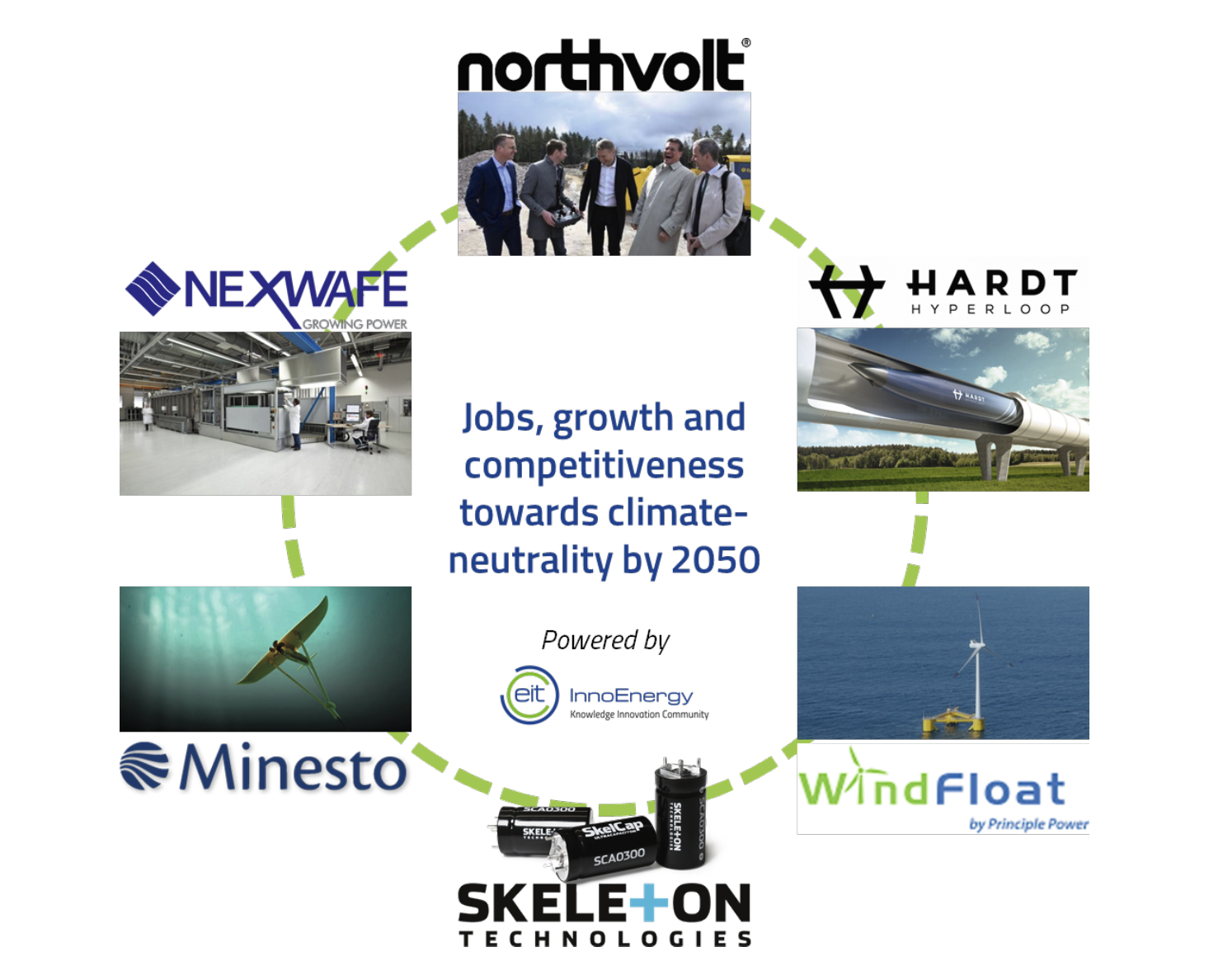A European innovation policy shaped to deliver the European Green Deal
June 8, 2019
By: Diego Pavia, CEO EIT InnoEnergy
Since July 2019, the ambition of President von der Leyen has been crystal clear: make Europe the first climate-neutral continent by 2050. This echoes a rising movement led by society to push global leaders to listen to the scientific community alerting us about the threat that climate change represents. This is now considered by the European Commission as “this generation’s defining task”.
While 2050 may seem far-away, the risk of reaching the tipping point combined with system inertia and a lifetime of investments, requires us to accelerate and amplify the effort with no delay. All sectors of the economy will have to adapt, or they will eventually be substituted or disappear.
This implies simultaneous socio-technico-economic changes at all levels of the system. No economic activity will be left unaffected. Furthermore, transitioning to mitigate climate change and adapt society to its impacts implies taking decisions in a context of very high uncertainty.
A new set of policies to rewire the entire economy
To deliver on its ambition, the Union must aim to deeply and irreversibly impact the structure of the economy, by encouraging resources to move into specific sectors aligned with climate-neutrality by 2050. This requires the appropriate framework for the structural changes to unfold in all economic activities.
This should be based on policies such as subsidies for innovative technologies, rising economic incentives to better reflect carbon price, incentives to upskill and reskill the entire workforce and to facilitate its geographical mobility, in particular in carbon-intensive regions. To mitigate the very high level of uncertainty and keep investment risk as low as possible, long-term targets must be set and pathways defined.
Some initiatives, such as those announced in the European Green Deal, will undeniably contribute to create this favourable context. We can notably mention the initiatives in the EU ETS, the Energy Taxation directive, the Energy Efficiency Directive, the Renewable Energy Directive, CO2 standards for vehicles, or the proposal for a Just Transition Fund.
On top of that, the European Climate Law proposed by the European Commission in March 2020 is decisive on climate neutrality as the clear goal, and will play a critical role in managing uncertainty in the eyes of investors, by locking in polices, protected from future political changes.
The EU Innovation policy: the beating heart of our industrial strategy
The endeavor to climate neutrality must also involve rethinking the Union’s innovation policy. Innovation and entrepreneurship are imperative for any organisation to develop a competitive advantage. That’s why, as proposed by the Commission in the New Industrial Strategy for Europe published in March 2020, the Union’s innovation policy should be at the heart of the industrial strategy, which will be the engine driving towards a climate-neutral future.
The European way of fostering innovation is unique. The European innovation system is co-created by the public and private sectors, and involves national and European levels. Along the innovation value chain, the EU plays a leading role, via collaborative initiatives to facilitate a European approach: at operational, strategic, and political levels.
It also acts as a financier and investor, through the InnovFin programme of the European Investment Bank or the European Innovation Council (EIC) Accelerator programme, which will offer equity investments. This approach of innovation based on multi-stakeholder ecosystems is a genuine strength and a way to provide agility and resilience to the economic fabric.
The Union can count on various instruments and programmes supporting the emergence of innovation from labs to markets within these ecosystems. EIT InnoEnergy already seeks to make the best use of the European Union’s instruments to support its portfolio of assets at each step of their journey: by organizing regular interactions between public financiers and potential future candidates, by contributing to source large-scale demonstration projects, or via a pilot action with the EIC Accelerator to provide Business Acceleration Services to energy-related SMEs, in preparation of a future more structural collaboration.
It is now critical to make sure that stakeholders work hand-in-hand to offer a seamless and entrepreneur-centric experience, exploiting their collective potential, and to ensure that industry starts thinking at the scale of the continent.

An ambitious European Industrial Strategy to increase the pulse
We should go further: the Union should facilitate the coordination of large investments in cutting edge solutions offered by a highly skilled industrial fabric and foster the deployment of key enabling technologies.
This proactive coordinating approach at the interface of policy, finance, and industry could be achieved via the European Alliances to be founded along strategic value chains, in line with the new EU Industrial Strategy. This approach has indeed demonstrated its merit notably with the European Battery Alliance championed by Vice-President Maroš Šefčovič.
EIT InnoEnergy, as the European Public-Private Partnership accelerating and de-risking the market uptake of innovations in sustainable energy, was entrusted to steer the industry across the battery value chain. The aim was to foster a vivid pan-European ecosystem driven by the shared ambition to deliver technological leadership and competitive products and services for Europe, such as Northvolt which became the first European unicorn in this field, to eventually catch up with Asian players and protect our sovereignty.
The feedback collected along this process should be used to mobilise industry around the future strategic value chains which will have to play a key role towards climate-neutrality of the continent such as Clean Hydrogen and Low-Carbon Industries.
In addition, the Strategy pledges to develop a more entrepreneurial mindset to become more “failure-tolerant”. In this direction, the European Innovation policy should align with the industrial strategy and the climate-neutrality objective, grounded to the concept of “Think big, move fast”, by ensuring the seamless and entrepreneur-centric experience from idea to European leadership mentioned earlier.
All in all, a full-fledged industrial strategy aligned with the European Green Deal should deliver EU prosperity and competitiveness, prepare our businesses and citizens to a world impacted by climate change, and secure the Union’s future relevance, at home and abroad.
The next five years will be decisive for the achievement of climate-neutrality by mid-century while leaving no one behind. In this endeavour, by propelling promising European innovative start-ups and SMEs bringing the European Green Deal and industrial policy to life, and by leveraging its expertise to mobilise strategic value chains and eventually serve the Union, EIT InnoEnergy is committed to keep acting as a catalyst of low carbon solutions for Europe.
The Business Booster 2020 will do just that as we bring together stakeholders from across Europe at the largest sustainable energy innovation event. We look forward to seeing you there from 4-5 November, Hub 27 – Berlin. Register now, totally risk free.